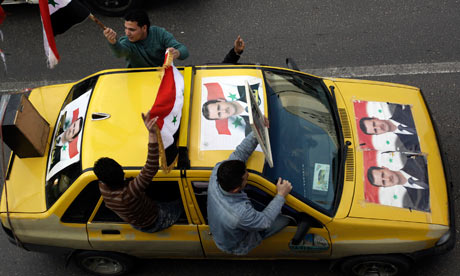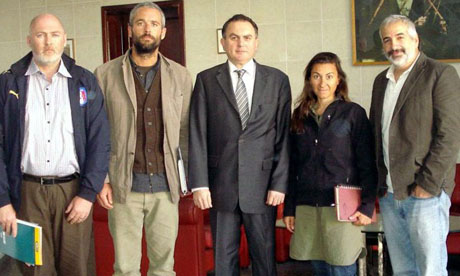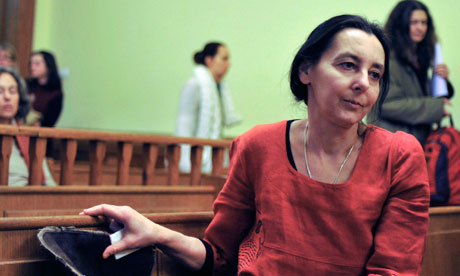Reuters – A man cleans his bicycle at an areadestroyed by the tsunami in Kamaishi town,Iwate Prefecture in northern …
TOKYO (Reuters) – Highly radioactive water has been found at a second reactor at a crippled nuclear power station in Japan, the plant's operator said, as fears of contamination escalated two weeks after a huge earthquake and tsunami battered the complex.
Underscoring growing international concern about nuclear power raised by the accident in northeast Japan, U.N. Secretary-General Ban Ki-moon said in a statement it was time to reassess the international nuclear safety regime.
Earlier, Japanese Prime Minister Naoto Kan, making his first public statement on the crisis in a week, said the situation at the Fukushima nuclear complex, 240 km (150 miles) north of Tokyo, was "nowhere near" being resolved.
"We are making efforts to prevent it from getting worse, but I feel we cannot become complacent," Kan told reporters. "We must continue to be on our guard."
The comments reflected a spike of unease in Japan after several days of slow but steady progress in containing the nuclear accident, which was triggered by a devastating earthquake and tsunami on March 11.
The 9.0 magnitude quake and giant waves it triggered left more than 10,000 people dead and 17,500 missing.
Despite such a shocking toll, much attention since the disaster has been on the possibility of a catastrophic meltdown at Fukushima.
Two of the plant's six reactors are now seen as safe but the other four are volatile, occasionally emitting steam and smoke.
More than 700 engineers have been working in shifts to stabilize the plant and work has been advancing to restart water pumps to cool their fuel rods.
But fresh fears were raised on Thursday when three workers trying to cool the most critical reactor were exposed to radiation levels 10,000 times higher than normally found in a reactor. They were hospitalized after walking in contaminated water though they are expected to be discharged soon.
The high level of contamination raised the possibility of a leak of radioactive material through a crack in the core's container which would mean a serious reversal following slow progress in getting the plant under control.
The reactor, the No. 3 unit, is the only one to use plutonium in its fuel mix which is more toxic than the uranium used in the other reactors.
The plant's operator, Tokyo Electric Power Co (TEPCO), and the state nuclear safety agency said late on Friday similarly contaminated water had been found at the turbine building of the No. 1 reactor.
"We do not know the cause," a TEPCO official told a news conference. The new finding had delayed work again, another official said.
Senior nuclear safety agency official Hidehiko Nishiyama said the high radiation meant there could be damage to the reactor but he later said it could be from venting operations or water leakage from pipes or valves.
"There is no data suggesting a crack," he said.
Nuclear watchdog the International Atomic Energy Agency (IAEA) said on Friday there had not been much change in the crisis over the previous 24 hours.
"Some positive trends are continuing but there remain areas of uncertainty that are of serious concern," agency official Graham Andrew said in Vienna, adding the high radiation could be coming from steam.
Seventeen workers had received elevated levels of radiation since the operation began, the agency said.
"LESSONS LEARNED"
Authorities have been using seawater to cool the reactors but it is corrosive and leaves salt deposits that constrict the amount of water that can cool fuel rods.
TEPCO said it had started injecting freshwater into the pressure vessels of reactors No.1 and No.3 and expected to start injecting freshwater into No. 2 soon.
At U.N. Headquarters in New York, Ban called a high-level meeting to "take stock of the international response to the latest developments" in Japan. He said he was encouraging countries "to consider lessons learned" and to strengthen nuclear safety.
Meanwhile, the Japanese government has prodded tens of thousands of people living in a 20 km-30 km (12-18 mile) zone beyond the stricken complex to leave, but insisted it was not widening a 20 km evacuation zone.
"Given how prolonged the situation has become, we think it would be desirable for people to voluntarily evacuate," said Chief Cabinet Secretary Yukio Edano.
Authorities have already cleared about 70,000 people from a 20-km (12-mile) zone around the plant.
Edano has maintained there was no need to expand the evacuation zone, but an official at the Science Ministry confirmed that daily radiation levels in an area 30 km (18 miles) northwest of the plant had exceeded the annual limit.
Vegetable and milk shipments from near the stricken plant have been stopped, and Tokyo's 13 million residents were told this week not to give tap water to babies after contamination from rain put radiation at twice the safety level.
It dropped back to safe levels the next day, and the city governor cheerily drank tap water in front of cameras.
Experts say radiation from the plant is still generally below levels of exposure from flights or medical X-rays.
Nevertheless, South Korea, Taiwan, Singapore, Australia, the United States and Hong Kong are restricting food and milk imports from the zone. Other nations are screening Japanese food, and German shipping lines are simply avoiding the country.
In Japan's north, more than a quarter of a million people are in shelters. Exhausted rescuers are still sifting through the wreckage of towns and villages, retrieving bodies.
Amid the suffering, though, there was a sense the corner was being turned. Aid is flowing and phone, electricity, postal and bank services have resumed, though they can still be patchy.
Owners of small businesses have begun cleaning up.
"Everybody on this block has the firm belief that they are going to bring this thing back again," said Maro Kariya in the town of Kamaishi, as he cleared debris from a family coffee shop.
The estimated $300 billion damage makes it the world's costliest natural disaster. Global financial market jitters over the crisis have calmed, though supply disruptions are affecting the automobile and technology sectors.
Treasury Secretary Timothy Geithner said he was not concerned that the crisis in Japan would impede a U.S. recovery.
(Additional reporting by Kiyoshi Takenaka in Tokyo, Jon Herskovitz in Kamaishi, Michael Shields and Sylvia Westall in Vienna; Writing by Robert Birsel)














